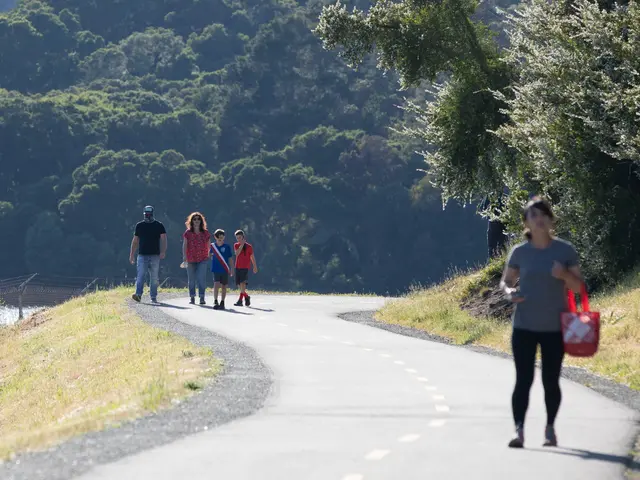People walks along a trail at a park in San Mateo County, San Francisco Bay Area, the United States, May 4, 2020. (Photo by Li Jianguo/Xinhua)
Governor of the U.S. state of Oregon Kate Brown announced on Thursday new details of her framework for counties and businesses on a phased reopening process.
Under specific safety guidelines, counties can begin the limited reopening of restaurants and bars for sit-down service, personal care and service businesses in Phase One. In-person gatherings of up to 25 people will also be allowed, according to the announcement.
Counties are eligible to begin the limited reopening of additional business sectors as early as May 15 if they can meet all prerequisites for reopening such as a decline in COVID-19 cases or fewer than 5 hospitalizations, sufficient COVID-19 testing and contact tracing capability, and backup plans for the isolation and quarantine of new cases, the announcement detailed.
Next week, updated safety guidelines regarding transit, certain child care, summer school and summer camps and youth programs will be issued. The new guidance on reopening calls for the widespread use of face coverings, maintaining social distancing of six feet and following good hygiene and disinfection practices.
The governor emphasized that by taking steps gradually and carefully and following science and data, Oregon can begin to reopen safely. "We are on track in meeting the goals ... And that means we now have the opportunity to begin rebuilding a safe and strong Oregon," Brown said.
By following the strict physical distancing guidelines over the past several weeks, Oregon has successfully defeated the curve of COVID-19 cases. There are currently fewer than 100 COVID-19 hospitalizations in the state, and Oregon has made plans for increasing testing capacity, expanding contact tracing capability and building reserves of personal protective equipment, the announcement said.
Counties must remain in Phase One for at least 21 days before entering Phase Two. Significant growth in COVID-19 spread could necessitate a county moving back from Phase One to a stay-at-home status, the announcement warned.
 简体中文
简体中文




